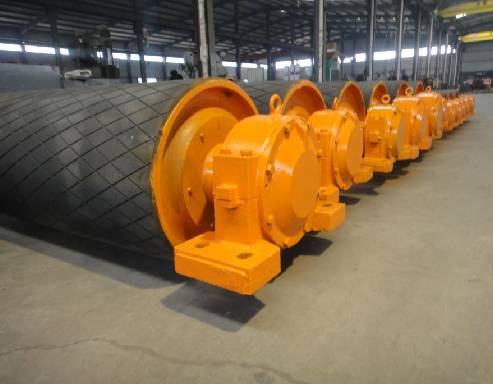 Afrikaans
Afrikaans  Albanian
Albanian  Amharic
Amharic  Arabic
Arabic  Armenian
Armenian  Azerbaijani
Azerbaijani  Basque
Basque  Belarusian
Belarusian  Bengali
Bengali  Bosnian
Bosnian  Bulgarian
Bulgarian  Catalan
Catalan  Cebuano
Cebuano  Corsican
Corsican  Croatian
Croatian  Czech
Czech  Danish
Danish  Dutch
Dutch  English
English  Esperanto
Esperanto  Estonian
Estonian  Finnish
Finnish  French
French  Frisian
Frisian  Galician
Galician  Georgian
Georgian  German
German  Greek
Greek  Gujarati
Gujarati  Haitian Creole
Haitian Creole  hausa
hausa  hawaiian
hawaiian  Hebrew
Hebrew  Hindi
Hindi  Miao
Miao  Hungarian
Hungarian  Icelandic
Icelandic  igbo
igbo  Indonesian
Indonesian  irish
irish  Italian
Italian  Japanese
Japanese  Javanese
Javanese  Kannada
Kannada  kazakh
kazakh  Khmer
Khmer  Rwandese
Rwandese  Korean
Korean  Kurdish
Kurdish  Kyrgyz
Kyrgyz  Lao
Lao  Latin
Latin  Latvian
Latvian  Lithuanian
Lithuanian  Luxembourgish
Luxembourgish  Macedonian
Macedonian  Malgashi
Malgashi  Malay
Malay  Malayalam
Malayalam  Maltese
Maltese  Maori
Maori  Marathi
Marathi  Mongolian
Mongolian  Myanmar
Myanmar  Nepali
Nepali  Norwegian
Norwegian  Norwegian
Norwegian  Occitan
Occitan  Pashto
Pashto  Persian
Persian  Polish
Polish  Portuguese
Portuguese  Punjabi
Punjabi  Romanian
Romanian  Russian
Russian  Samoan
Samoan  Scottish Gaelic
Scottish Gaelic  Serbian
Serbian  Sesotho
Sesotho  Shona
Shona  Sindhi
Sindhi  Sinhala
Sinhala  Slovak
Slovak  Slovenian
Slovenian  Somali
Somali  Spanish
Spanish  Sundanese
Sundanese  Swahili
Swahili  Swedish
Swedish  Tagalog
Tagalog  Tajik
Tajik  Tamil
Tamil  Tatar
Tatar  Telugu
Telugu  Thai
Thai  Turkish
Turkish  Turkmen
Turkmen  Ukrainian
Ukrainian  Urdu
Urdu  Uighur
Uighur  Uzbek
Uzbek  Vietnamese
Vietnamese  Welsh
Welsh  Bantu
Bantu  Yiddish
Yiddish  Yoruba
Yoruba  Zulu
Zulu Understanding Drive Belts and Pulleys for Efficient Power Transmission Systems
Understanding Drive Belts and Pulleys Essential Components of Machinery
Drive belts and pulleys are crucial components found in various machinery and mechanical systems, playing a pivotal role in the transmission of power and motion. This article delves into their functions, types, and applications, highlighting their importance in ensuring efficient operation.
Understanding Drive Belts and Pulleys Essential Components of Machinery
Pulleys come in different forms, including fixed, movable, and compound pulleys, each serving a unique purpose. A fixed pulley changes the direction of the force applied, while a movable pulley reduces the force needed to lift an object. Compound pulleys combine the features of both, making it easier to lift heavy loads. This versatility makes them indispensable in various applications, including construction, manufacturing, and even recreational activities.
drive belts and pulleys

Drive belts also vary in type, with common examples including V-belts, flat belts, and timing belts. V-belts, characterized by their trapezoidal cross-section, are widely used in automotive engines due to their excellent grip and ability to handle high loads. Flat belts, on the other hand, are ideal for transferring power over long distances but require precise alignment. Timing belts, equipped with teeth that engage with pulleys, ensure synchronous motion, making them crucial in applications where timing is critical, such as in camshaft and crankshaft connections in engines.
The efficiency of a drive system is significantly influenced by the condition and alignment of both belts and pulleys. Regular maintenance is vital to prevent slippage, wear, and misalignment, which can lead to decreased performance or catastrophic failure. Engineers often design systems with adjustability to accommodate wear and stretching of belts over time.
In conclusion, drive belts and pulleys are fundamental elements in the mechanical world, enabling efficient transmission of power and motion across a variety of machines. Their diverse forms and applications underline the importance of understanding these components for anyone involved in engineering, manufacturing, or maintenance. As technology continues to advance, the evolution of drive systems will surely play a significant role in enhancing efficiency and performance across numerous industries.
-
Revolutionizing Conveyor Reliability with Advanced Rubber Lagging PulleysNewsJul.22,2025
-
Powering Precision and Durability with Expert Manufacturers of Conveyor ComponentsNewsJul.22,2025
-
Optimizing Conveyor Systems with Advanced Conveyor AccessoriesNewsJul.22,2025
-
Maximize Conveyor Efficiency with Quality Conveyor Idler PulleysNewsJul.22,2025
-
Future-Proof Your Conveyor System with High-Performance Polyurethane RollerNewsJul.22,2025
-
Driving Efficiency Forward with Quality Idlers and RollersNewsJul.22,2025





























